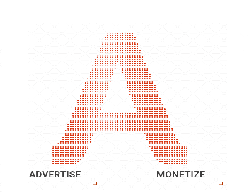Day 22: IFRS 3 – Business Combinations
Introduction
International Financial Reporting Standard (IFRS) 3, “Business Combinations,” is a crucial standard that outlines the accounting and reporting requirements for business combinations, including mergers and acquisitions. This standard provides guidance on how to account for the acquisition method, calculate goodwill, identify the acquirer, and allocate the purchase price.
Scope and Objective
IFRS 3 applies to all business combinations, including mergers and acquisitions, and requires the acquirer to recognize the assets and liabilities of the acquiree at their fair values. The objective of IFRS 3 is to provide a framework for accounting for business combinations that reflects the economic reality of the transaction and provides stakeholders with a clear understanding of the financial effects of the combination.
Acquisition Method and Goodwill Calculation
The acquisition method is the primary method used to account for business combinations under IFRS 3. This method requires the acquirer to recognize the assets and liabilities of the acquiree at their fair values, with any excess consideration paid being recognized as goodwill.
Goodwill is calculated as the difference between the consideration paid by the acquirer and the net fair value of the acquiree’s identifiable assets and liabilities. Goodwill represents the future economic benefits that are expected to arise from the business combination, such as synergies, market share, and intellectual property.
The calculation of goodwill is as follows:
Goodwill = Consideration paid – Net fair value of identifiable assets and liabilities
For example, suppose Company A acquires Company B for $100 million. The net fair value of Company B’s identifiable assets and liabilities is $80 million. The goodwill would be calculated as follows:
Goodwill = $100 million – $80 million = $20 million
Identifying the Acquirer and Purchase Price Allocation
Identifying the acquirer is critical in a business combination, as it determines which entity will recognize the assets and liabilities of the other entity. The acquirer is the entity that obtains control of the other entity, usually through the acquisition of a majority of the voting shares.
The purchase price allocation is the process of allocating the consideration paid by the acquirer to the identifiable assets and liabilities of the acquiree. This allocation is based on the fair values of the assets and liabilities, with any excess consideration paid being recognized as goodwill.
The purchase price allocation involves the following steps:
- Identify the consideration paid by the acquirer
- Determine the net fair value of the acquiree’s identifiable assets and liabilities
- Allocate the consideration paid to the identifiable assets and liabilities
- Recognize any excess consideration paid as goodwill
For example, suppose Company A acquires Company B for $100 million. The net fair value of Company B’s identifiable assets and liabilities is $60 million. The purchase price allocation would be as follows:
|
| Asset/Liability | Fair Value | |
|
|
| Cash |
$10 million |
|
| Accounts receivable | |
$20 million |
|
| Property, plant, and equipment |
$30 million |
|
| Liabilities |
($10 million) |
|
| Net assets |
$50 million |
|
| Goodwill |
$50 million |
In this example, the consideration paid by Company A ($100 million) is allocated to the identifiable assets and liabilities of Company B ($50 million), with the remaining $50 million recognized as goodwill.
Accounting for Business Combinations
The accounting for business combinations involves the following steps:
- Identify the acquirer and the acquiree
- Determine the consideration paid by the acquirer
- Recognize the assets and liabilities of the acquiree at their fair values
- Allocate the consideration paid to the identifiable assets and liabilities
- Recognize any excess consideration paid as goodwill
The accounting for business combinations is illustrated in the following example:
Suppose Company A acquires Company B for $100 million. The net fair value of Company B’s identifiable Net Assets is $50 million. The accounting for the business combination would be as follows:
Company A recognizes the assets and liabilities of Company B at their fair values:
Cash: $10 million
Accounts receivable: $20 million
Property, plant, and equipment: $30 million
Liabilities: ($10 million)
Company A allocates the consideration paid to the identifiable assets and liabilities:
Cash: $10 million
Accounts receivable: $20 million
Property, plant, and equipment: $30 million
Liabilities: ($10 million)
Company A recognizes the excess consideration paid as goodwill:
Goodwill: $50 million
Disclosure Requirements
IFRS 3 requires the following disclosures for business combinations:
- The name and description of the acquiree
- The date of acquisition
- The consideration paid by the acquirer
- The net fair value of the acquiree’s identifiable assets and liabilities
- The amount of goodwill recognized
- The accounting policies used to account for the business combination
Conclusion
IFRS 3 provides guidance on the accounting and reporting requirements for business combinations, including the acquisition method, goodwill calculation, identification of the acquirer, and purchase price allocation. By following these guidelines, companies can ensure that their financial statements accurately reflect the financial effects of business combinations and provide stakeholders with a clear understanding of the transaction.
Previous Post IFRS 2 Share Based Payments
Next Post IFRS 10 Consolidated Financial Statements
Bookkeeping Services at One Web One Hub in association with MTF & Co.
One Web One Hub, in association with MTF & Co., offers comprehensive bookkeeping services to help businesses comply with IFRS 3 and other accounting standards. Our team of experienced accountants and bookkeepers can assist with:
- Financial statement preparation
- Accounting and reporting for business combinations
- Goodwill calculation and impairment testing
- Purchase price allocation and asset valuation
- Financial analysis and reporting
Contact us today to learn more about our bookkeeping services and how we can help your business succeed. Please email us at mtfco@onewebonehub.com.












